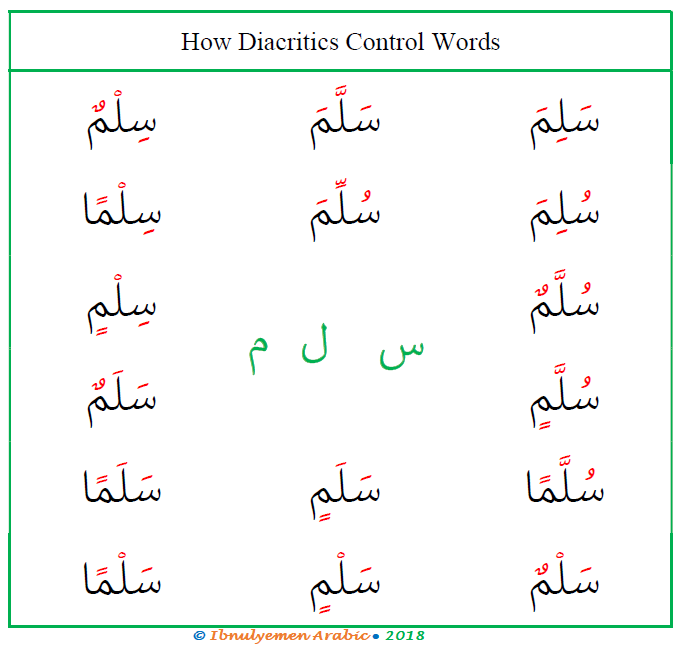Diacritics in Arabic determines word meanings. In the previous lesson, you learned about the shape of the diacritical marks and where they are positioned in relation to letters, i.e. above or below the letter. This lesson is about the importance and role of diacritics. The fourteen diacritical marks listed in the previous lesson are collectively called عَلَامَاتُ الشَّكْل ‘alaamaat ash-shakl, which literally means the ‘tools of controlling the word’, namely controlling the pronunciation, the meaning, and to a certain extent the grammar.

From the table above, you can see that the use of diacritical marks, which include the short vowels (fatha, kasra, dhamma), the sukuun, and the shadda, generates sixteen different words from a single word root. This word root comprises three letters: س ل م. The difference between these words is in meaning, grammar, an pronunciation.
Let’s consider the first three words in the first line in the table. These words have the same component letters, and the only difference between them is the diacritical marks which make them three completely different words with respect to meaning. The first word سَلِمَ salima means ‘to be secure’, the second سَلَّمَ sallama means ‘to surrender’, and the third سِلْمٌ silmun means ‘the state of peace’
Looking at the last line in the table, the meaning of these three words is the same, that is ‘surrender’. The different between them is in the tanween. This signifies a grammatical difference. They are nouns, but one occurs in the subject position (سَلْمٌ), one in the object-of-verb position (سَلْمًا), and one in the object-of-preposition position (سَلْمٍ).
For a native speaker of Arabic, it is easy to understand the difference between these words without diacritical marks; however, it is important for a learner of Arabic as an additional language to learn how use and assign diacritics every time he/she encounter or learn new words. Not only does this help him/her pronounce words more accurately, but also uses them correctly.
In the next lesson, you will learn about Arabic cursive writing.